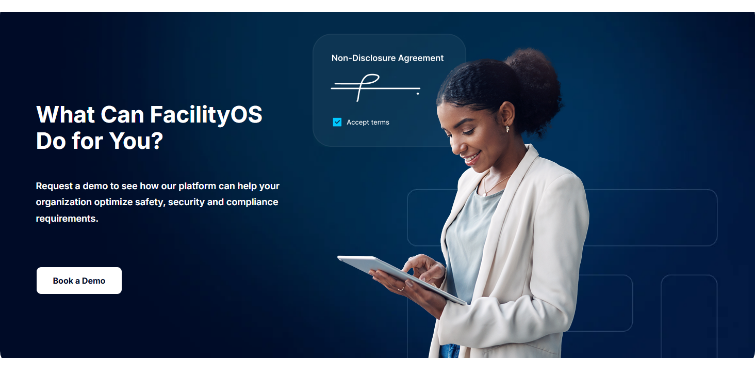Compliance-Driven Emergency Readiness Drills for Logistics Sites
Distribution centers face mounting pressure to demonstrate operational efficiency while maintaining strict compliance with safety and audit standards. Scenario-based drills (ranging from tabletop discussions to full live-action simulations) enable leadership to test every layer of an emergency management plan under realistic conditions.
Preparation begins by forming multidisciplinary drill teams with clearly defined roles, from operations supervisors to floor-level responders. Each team member should understand their specific responsibilities during different emergency scenarios. Simulations should mirror real-world threats relevant to logistics environments: severe weather events that could impact operations, medical emergencies in high-traffic areas, hazardous material spills in storage zones, or security incidents at loading docks.
Scenario-Based Drills: From Tabletop to Live-Action in Logistics Settings
Modern digital emergency solutions provide the infrastructure to run these drills effectively. During scenario-based exercises, team leaders can use digital platforms to record observations in real time through mobile devices and centralized dashboards. This immediate documentation ensures that lessons learned are captured while details are fresh, rather than relying on post-drill memory. Digital forms standardize the data collection process across multiple facilities, making it easier to identify patterns and improvement opportunities across an entire logistics network.
The key to effective drills is treating them as genuine learning opportunities rather than compliance checkboxes. After each exercise, leadership should review automated participant logs, evacuation times, communication effectiveness, and areas where procedures broke down. These insights directly inform training programs and process improvements, creating a continuous cycle of preparedness enhancement.
For industry-standard procedures, see READY Severe Wind/Tornado Toolkit.
Leveraging Digital Dashboards to Monitor Readiness & Compliance
The foundation of compliance-driven drills lies in comprehensive monitoring and audit-ready reporting capabilities. Real-time visibility into drill execution and participant accountability has become essential for modern logistics operations.
Digital emergency management platforms enable instant status tracking for every drill participant and operational zone. Through digital check-in system integrations facilities can instantly confirm the location and status of staff, contractors, and visitors throughout an emergency event. This real-time accountability addresses one of the most persistent challenges in logistics environments: accounting for a diverse, constantly changing population that includes permanent employees, temporary workers, delivery drivers, and third-party service providers.
Real-time dashboards serve as command centers during drills and actual emergencies. They display compliance status across the facility, highlight procedural steps that haven't been completed, and provide instant incident logging capabilities. This transparency benefits both internal safety teams and external auditors, who can observe drill execution either on-site or remotely through secure access.
For logistics facilities subject to OSHA standards, C-TPAT requirements, or ISO 28000 compliance, these digital tools integrate regulatory requirement prompts directly into the drill workflow. The system can guide safety officers through mandatory procedures, ensure that required notifications are sent, and benchmark performance against industry guidelines. This integration makes every drill both a test of readiness and a training opportunity, with complete traceability from the initial alarm through the final all-clear and debrief.
How To Document, Audit, & Improve Safety with Real-Time Digital Reporting
Digital documentation transforms emergency drills from isolated events into valuable data sources that drive continuous improvement in safety protocols and regulatory compliance.
Immediately following each drill, leadership can access automated reports that compile participant logs, incident records, response times, and time-stamped audit trails. These reports eliminate the manual data entry and compilation that traditionally consumed hours of administrative time after each exercise. More importantly, they provide objective data for identifying compliance gaps and reinforcing best practices in future protocols.
The data captured during drills reveals patterns that might not be apparent from a single event. For example, consistent delays in evacuating specific zones might indicate inadequate muster point capacity, unclear signage, or the need for additional safety officers in high-traffic areas. Communication breakdowns that appear across multiple drills highlight the need for backup notification systems or clearer emergency communication protocols.
Cloud-based reporting also streamlines both internal safety reviews and third-party audits. Rather than scrambling to compile documentation when inspectors arrive, facilities maintain ready-made records that satisfy even the most demanding regulatory environments. These digital records provide verifiable evidence of regular drill frequency, participation rates, evacuation times, and corrective actions taken in response to identified weaknesses.
For logistics operations managing multiple facilities, centralized reporting enables corporate safety teams to compare performance across sites, identify best practices that can be replicated, and ensure consistent safety standards throughout the organization.
EmergencyOS: Purpose-Built for Logistics Emergency Management
The logistics and warehousing industry faces unique emergency management challenges that generic solutions struggle to address. High employee turnover, diverse contractor populations, 24/7 operations across multiple shifts, and the constant flow of drivers and visitors create complexity that paper-based systems and basic software cannot handle effectively.
EmergencyOS provides a comprehensive platform designed specifically for these operational realities. The system maintains real-time visibility of everyone on-site (from warehouse staff to delivery drivers to maintenance contractors) by integrating with visitor management and time-and-attendance systems. During an emergency, this integration ensures that digital muster lists automatically reflect who is actually present, eliminating the dangerous inaccuracies of outdated paper rosters.
The platform's drill management capabilities allow facilities to schedule regular exercises, automate participant notifications, and capture detailed performance metrics without disrupting operations more than necessary. Safety teams can configure custom emergency profiles for different scenarios (from severe weather to hazardous material incidents to security threats) with tailored communication protocols and evacuation procedures for each type of event.
During actual emergencies or drills, EmergencyOS enables communication between safety officers and evacuees through SMS and in-app messaging. This real-time communication channel allows incident commanders to send updated instructions as situations evolve and receive status confirmations from personnel at remote locations or muster points.
For compliance-focused logistics operations, the platform automatically generates the detailed audit trails and documentation required by OSHA, C-TPAT, ISO 28000, and other regulatory frameworks. Every notification sent, every personnel check-in, every building sweep, and every all-clear is timestamped and securely stored, creating a complete digital record that demonstrates due diligence and supports continuous improvement initiatives.
By embracing digitized, scenario-driven drills supported by platforms like EmergencyOS, distribution centers move beyond simply passing audits. They build genuine emergency readiness that protects lives, maintains business continuity, and demonstrates a commitment to safety excellence that strengthens customer confidence and regulatory standing.
For more, see the FacilityOS Emergency Management Guide and OSHA Tornado Preparedness.
Stay updated with industry insights, success stories, and more by following us on social media for the latest FacilityOS content.
Table of Contents
Messiah Wafai



 Follow us on Facebook
Follow us on Facebook  Follow us on X
Follow us on X
 Follow us on LinkedIn
Follow us on LinkedIn